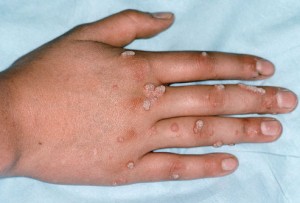Warts are common skin growths caused by the human papillomavirus (HPV). They can appear anywhere on the body and are often considered harmless, though they can be unsightly and uncomfortable. As individuals in Islamabad seek effective Warts Removal Treatment in Islamabad, a key question arises: what is the success rate of these treatments? This blog will explore the various treatment options available, their effectiveness, and factors influencing the success of wart removal.
Understanding Warts
Before delving into treatment success rates, it’s essential to understand what warts are. They are benign tumors that arise when HPV infects the outer layer of the skin. Warts can vary in appearance and type, including common warts, plantar warts, flat warts, and genital warts. While most warts are harmless, they can be a source of embarrassment or discomfort for many individuals, leading to the search for effective removal options.
Treatment Options for Warts
Several methods are available for wart removal, each with varying success rates:
1. Cryotherapy
Cryotherapy involves freezing the wart with liquid nitrogen. This method destroys the wart tissue, causing it to fall off after several days. The success rate for cryotherapy is generally high, with studies showing that about 70-90% of warts can be successfully removed with this treatment. However, multiple sessions may be necessary for complete removal, especially for larger or stubborn warts.
2. Electrosurgery
Electrosurgery uses electrical currents to burn off the wart. This method is effective, especially for larger warts, and has a success rate of around 80-90%. Similar to cryotherapy, multiple sessions may be needed, and patients may experience some discomfort during the procedure.
3. Laser Treatment
Laser therapy employs focused light beams to target and destroy wart tissue. This method is particularly effective for difficult-to-treat warts, including those that do not respond well to other treatments. The success rate for laser treatment is approximately 80-95%, depending on the type and size of the wart. Patients may experience minimal discomfort, and recovery time is typically quick.
4. Surgical Excision
Surgical excision involves cutting out the wart and surrounding tissue. This method is most commonly used for larger or more aggressive warts. The success rate for surgical excision is quite high, often exceeding 90%. However, as with any surgical procedure, there is a risk of scarring or infection.
5. Topical Treatments
Over-the-counter topical treatments, such as those containing salicylic acid, are available for wart removal. These treatments can be effective for small, superficial warts, but their success rates vary widely. Many patients may need to use these treatments consistently for several weeks or months, and the success rate can be as low as 50-60%.
Factors Influencing Success Rates
While treatment methods provide varying success rates, several factors can influence the overall effectiveness of wart removal:
1. Type and Location of the Wart
Different types of warts may respond better to specific treatments. For instance, plantar warts, which appear on the soles of the feet, can be more challenging to treat and may require a combination of methods for successful removal. The location of the wart also plays a role; warts in sensitive areas may require more careful handling.
2. Immune System Health
An individual’s immune system plays a significant role in the body’s ability to fight off HPV and remove warts. Those with weakened immune systems may experience a higher rate of wart recurrence and may require more aggressive treatment approaches.
3. Treatment Adherence
Successful wart removal often depends on the patient’s adherence to the treatment regimen. Following aftercare instructions and attending follow-up appointments can significantly impact the success of the treatment.
4. Experience of the Provider
The skill and experience of the healthcare provider performing the wart removal procedure can also influence success rates. Choosing a qualified and experienced dermatologist can enhance the likelihood of a successful outcome.
Conclusion
The success rate of Warts Removal Treatment in Islamabad varies depending on the chosen method and individual factors. Treatments like cryotherapy, electrosurgery, and laser therapy offer high success rates, often exceeding 80%. However, the type and location of the wart, the patient’s immune health, and the experience of the provider can all influence outcomes.
For those seeking effective wart removal solutions, consulting a professional is crucial. At SKN Cosmetics Clinic, our team of experienced dermatologists is dedicated to providing personalized care and effective treatment options tailored to your specific needs. Contact us today to schedule your consultation and take the first step toward clear, healthy skin!
Stay tuned for more news and updates on Infinite Insight Hub!



